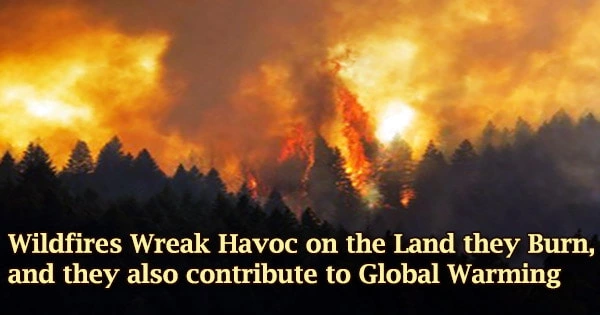The wildfire season of 2021 set new records around the world, charring terrain from California to Siberia. The risk of fire is increasing, and a UN research released last month predicted that wildfires will increase by 50% by 2050. As they burn, these fires damage homes, plant life, and animals, but the danger does not end there.
On March 18, researchers published a paper in the journal One Earth detailing how brown carbon released by burning biomass in the northern hemisphere is hastening Arctic warming and warning that this could lead to even more wildfires in the future.
Large plumes of brown smoke, made up of particles of brown carbon suspended in the air, accompany blazing wildfires. This smoke is hazardous to one’s health and can even block out the light during the summer, and scientists believe it is contributing to global warming.
The Chinese icebreaker Xue Long set out for the Arctic Ocean in 2017 to investigate which aerosols were floating around in the clear Arctic air and to determine their sources.
The scientists on board were especially interested in learning how brown carbon released by wildfires affected the climate and how its warming effects compared to those of denser black carbon produced by high-temperature fossil fuel combustion, which is the second most powerful warming agent after carbon dioxide.
The increase in brown carbon aerosols will lead to global or regional warming, which increases the probability and frequency of wildfires. Increased wildfire events will emit more brown carbon aerosols, further heating the earth, thus making wildfires more frequent.
Pingqing Fu
Brown carbon contributed to warming more than previously anticipated, according to their findings.
“To our surprise, observational analyses and numerical simulations show that the warming effect of brown carbon aerosols over the Arctic is up to about 30% of that of black carbon,” says senior author Pingqing Fu, an atmospheric chemist at Tianjin University.
The Arctic has warmed at three times the rate of the rest of the planet in the last 50 years, and wildfires appear to be contributing to this disparity. Brown carbon from biomass burning was determined to be responsible for at least twice as much heat as brown carbon from fossil fuel combustion, according to the researchers.
Brown carbon, like black and carbon dioxide, warms the planet by absorbing solar energy. This creates a positive feedback loop because rising temperatures have been related to an increase in wildfires in recent years.
“The increase in brown carbon aerosols will lead to global or regional warming, which increases the probability and frequency of wildfires,” says Fu.
“Increased wildfire events will emit more brown carbon aerosols, further heating the earth, thus making wildfires more frequent.”
Fu and his colleagues aim to look into how wildfires change the composition of aerosols from sources other than brown carbon in the future. They’re particularly interested in how fires affect bioaerosols, which come from plants and animals and can contain living organisms such as diseases.
In the meantime, Fu urges that attention be focused on wildfire mitigation. “Our findings highlight just how important it is to control wildfires,” he says.
This work was supported by the National Natural Science Foundation of China.





